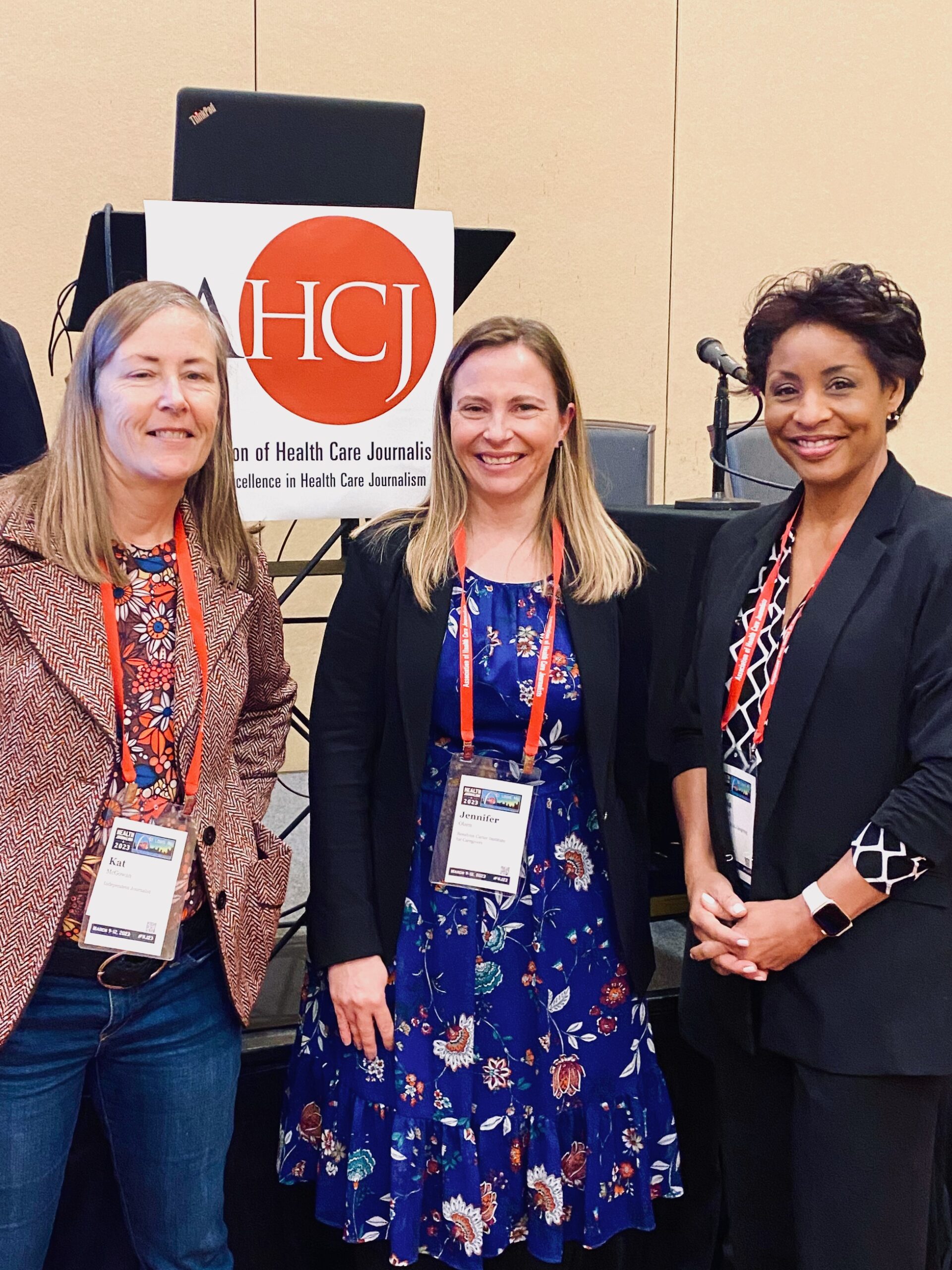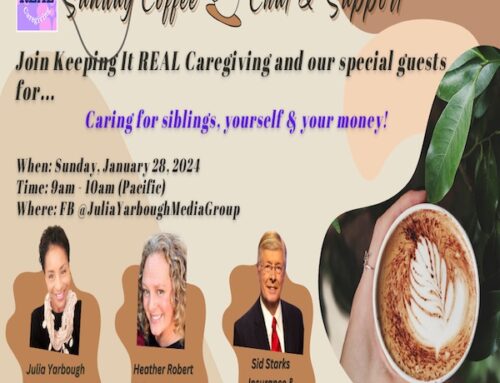HJ23 session: Putting a face on family caregiving
*This is a reprtint article published by the Association of Health Care Journalists. Keeping It REAL Caregiving and Julia Yarbough had the honor of presenting during the 2023 annual conference.
Caregiving reality

Caregiving. It seems almost everyone has a story, whether they’re a millennial, baby boomer or older person caring for a parent, spouse, or a family member with disabilities.
A new AARP report found that family caregivers provide a whopping $600 billion worth of uncompensated care across the U.S. annually more than the federal government spends on long term services and supports.
Friday’s HJ23 panel, “The biggest untold story in health care: 53 million family caregivers” focused on both the deeply personal stories of caring for a parent and the lack of services, supports and information available for family caregivers.
As a young entrepreneur, Rey Castuciano was living his best life in California. Until that phone call from his mom in St. Louis in 2013. His father had suffered a stroke. Castuciano immediately traveled to his father’s side. He had hoped his stay in Missouri would be temporary — but quickly realized that his parents — both of them — would need help for a long, long time.
Castuciano took on the role of family caregiver, everything from driving them to doctor appointments to helping with bathing and other daily living activities. It was a role for which he was totally unprepared.
Castuciano explained that he never questioned whether he’d help care for his dad; it was part of the Filipino culture he had been raised in. But he hadn’t understood “how life changing this would be.” He often found himself as the only male attending a caregiver support group – and the only young person.
“My eyes were opened to the lack of available resources for family caregivers, and for younger, male family caregivers in particular,” he said. Plus, he had to figure out how to earn a living while putting in about 35 hours a week helping his mom and dad.
Data
About 61% of all caregivers work full time, which puts incredible strain on their personal lives and health, according to AARP. Approximately 40% of caregivers are male, a proportion that has increased steadily over the past decade.
The KIRC Story & the face of caregiving

Julia Yarbough, a former broadcast journalist in Chico, CA, addresses attendees during the “The biggest untold story in health care: 53 million family caregivers” session at HJ23.
A former local TV journalist in Chico, CA, Julia Yarbough had long planned for her mom to come live with her once she could no longer live on her own. But even with careful research, planning and preparation, caregiving was a continuous juggling act. Yarbough put in long hours at work, often into the evening. Then she would head home to help her mom, who had multiple chronic health conditions.
Finding home care aides, local caregiver support groups, or services geared to older women of color in a rural part of the state, was beyond challenging. “I thought I was completely prepared,” said Yarbough. “It still kicked my butt.”
Yarbough left journalism. She founded Keeping it Real Caregiving, which provides real-world information to caregivers and shares their stories.
“It’s not just driving your parent to a doctor’s appointment,” she said. “It’s about intimate care like bathing them or keeping them clean after they use the bathroom because they have limited range of motion, so may not be able to do it themselves.”
Research and advocacy

(l to r): Journalist Kat McGowan, Jennifer Olsen, CEO of Rosalynn Carter Institute for Caregivers, Julia Yarbough, KIRC
There just aren’t enough practical supports and structures in place for caregivers, especially those which address the mental and physical health of the caregivers, according to Jennifer Olsen, CEO of Rosalynn Carter Institute for Caregivers, In our health system, she noted, what services that are available usually depend on the diagnosis of the person receiving care – not on the capacity and needs of the family member providing their care.
Employers, too, can do more to support family caregivers, Olsen said. But caregivers are often reluctant to discuss their family situation at work – at least until it affects performance. She thinks employers should be more proactive in establishing policies and communications which support these increasingly common scenarios, without losing quality employees in the process.
“Turn the situation around,” she suggested. “Take the initiative, rather than waiting for the caregiver to come to you when they’re in crisis.”
When Yarbough discusses caregiving, she makes sure to put a name and a face on every story. “Tell stories that resonate,” she said. “Discuss what’s really at stake.”
From millennials to the workplace, from housing to tech, almost any story can be a caregiver story.
Thank you to health journalist Liz Seegert for her dedication to sharing stories in this space and educating the public.
To check out a full series of articles from the Association of Health Care Journalists 2023 conference, click here.






Like our content? We invite you to leave a comment and say hello!